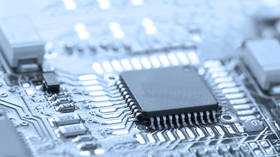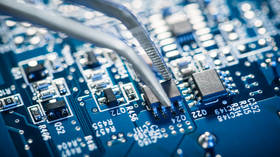Russia-Ukraine crisis puts pressure on microchip supply chain

The already-stretched semiconductor industry is expected to suffer more interruptions from the current conflict in Eastern Europe, as Ukraine and Russia provide the bulk of the world’s supplies of neon and palladium, vital for the production of microchips.
Neon, critical for the lasers used to make chips, is a by-product of Russian steel manufacturing. It is then purified in Ukraine. Palladium is used in sensors and memory, among other applications.
The current global chip shortage will worsen if the standoff persists as more than 40% of the world’s supply of palladium comes from Russia, while Ukraine produces 70% of the global supply of neon, according to Moody’s Analytics.
“During the 2014-2015 war in Ukraine, neon prices went up by several times over, indicating how serious this can be for the semiconductor industry: semiconductor-exposure companies make up 70% of total neon demand, as it is an integral part of the lithographic process for making chips,” Tim Uy of Moody’s Analytics wrote in a recent report, seen by the Business Standard.
The ongoing chip shortage severely hit global producers during the Covid-19 pandemic in 2020-21 after remote work and mobility restrictions triggered an acceleration of digitization across the world.
Moody’s expects the chip crunch to deepen if a deal is not brokered in the coming months, with industries highly dependent on semiconductors to be impacted accordingly.
“This means significant risks are ahead for many automakers, electronic device manufacturers, phone makers, and many other sectors that are increasingly reliant on chips for their products to work,” the experts warn.
For more stories on economy & finance visit RT's business section













